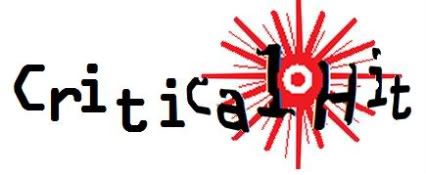
Format: PC
Unleashed: Out Now
Publisher: Runic Games
Developer Runic Games
Players: 6 Online/LAN Co-op
Site: http://www.torchlight2game.com/
Let’s get right to it: Torchlight II from Runic Games is one of the best action RPGs released this side of 2001, and that includes Blizzard’s commercial behemoth Diablo 3. A clear-cut, proudly accessible game, it flouts Blizzard’s paranoid insistence on heavy DRM and delivers an easy to use, difficult to master, magical explosion of pure clicking action. If you like your screen filled with hoards of monsters, exploding colours and endless loot then Torchlight II is the game for you.
If Runic’s approach to releasing and running Torchlight II is somewhat antithetical to Blizzard’s – Torchlight is available with very light DRM requirements (you need to activate it through Runic Games for online play), doesn’t require you to play single-player with an internet connection and can be bought for a mere £15 – then in terms of gameplay the two are very similar. You start the game by choosing one of four new classes: Berserker, Embermage, Outlander and Engineer. The classes, though generally suited to specific play styles, are hardly deterministic and allow you to appropriate them in whatever way you wish. If the Engineer is meant to use two-handed weapons, there’s nothing stopping you from equipping two pistols or a classic sword and shield combo. The ability to switch between two weapon sets at the touch of a button means that you can really experiment with your character’s combat style.

Some of the game’s enemies are superbly colourful.
Your character is also modified through stat and skill points. While the stats are pretty standard – strength, dexterity, magic, and vitality – the skills provide some exciting choices. Unleash an ethereal pack of wolves to devour your foes or perhaps construct homing mines to destroy them before they reach you. The number and variety of skills available across the four characters means that decisions as to which skills you increase feels important. After completing the game with an Engineer we still hadn’t unlocked all of the character’s abilities, giving us impetuous to replay not only other characters but the same ones.
As you would expect, skills and stats can be upgraded every time your character levels up. Thankfully the game also brings back the inventive “Fame” mechanic from the first game to allow you to expand your character’s skills. Your Fame increases every time you complete a quest or side-quest as well as whenever you defeat a boss; and once it reaches a certain level you are granted a new skill point. While the most spectacular bosses, which appear at the end of the dungeon, provide the most Fame, Torchlight II also litters it’s randomly generated dungeons with mini-bosses which give you a chance to earn smaller amounts of Fame. These mini-bosses are generally stronger versions of the standard creatures but their presence really adds an extra sense of drama and trepidation to certain encounters – as well as promising much deserved rewards.
Combat is really the backbone of Torchlight II’s success (a colourfully grotesque backbone though it may be). It’s not uncommon for the screen to become filled with a terrifying number of enemies and for the player’s character to simply get lost amid the swirling mass. However the game manages to pull this maximalist approach off by providing a variety of enemy types at once so that, while it is often a case of clicking the crap out of everything on screen, you also have to think on your feet about which skills to use in order to stay alive.

Combat is made even more dramatic by the inclusion of online (and LAN) co-op. The game allows for up to six players to be playing in the same game, which means, with a full party of characters, dungeons in Torchlight II often become something resembling an off-the-hook D&D rave. Monsters are also upscaled in difficulty during internet play, giving an extended playability to dungeons, as well as a new challenge for those hardcore enough to go it alone.
While combat is vibrant, Torchlight II’s plot can feel disappointingly bare-bones. Interestingly it takes one of the starting characters from the first game, the Alchemist, and turns him into the villain. After being corrupted by the Ordrak (an evil dragon which you battle in the first game) the Alchemist destroys the town of Torchlight before hotfooting it away. You are then tasked with finding and killing him in order to save the world. The narrative quickly devolves into standard RPG fare and entirely neglects to develop any memorable characters or real sense of propulsion.
Thankfully any doubts about the story are quickly lost in the mists of battle. Torchlight II is simply a joy to play and the visual style of the game is in keeping with it’s earnest sense of fun. Like its predecessor, Torchlight II takes visual cues from the likes of World of Warcraft or Fable rather than the grizzled fantasy of The Elder Scrolls or Diablo. Each act features three quite distinct locations with an array of monster and NPCs to interact with. As said above, the characters have about as much personality as a vending machine, but the sense of place in each location is well-maintained through unique architecture, environments and enemies. Unfortunately the curious absence of a world map can lead to these locations feeling somewhat disconnected from each other.
Torchlight II is a game which provides an accessible and colourful action RPG experience in which combat and loot are king. In this respect it feels very in keeping with the rest of the genre and could be criticised for lacking originality However, if the game lacks original vision, it more than makes up for it with a sublime rendition of these classic action RPG principles. In terms of sheer fun and playability Torchlight II is up there with the best. 



Comments